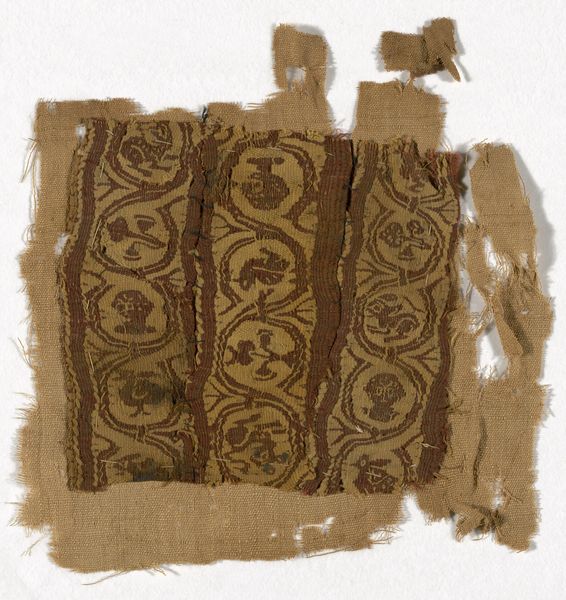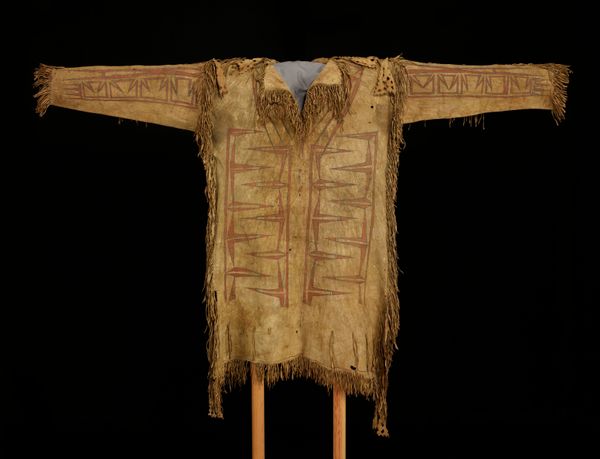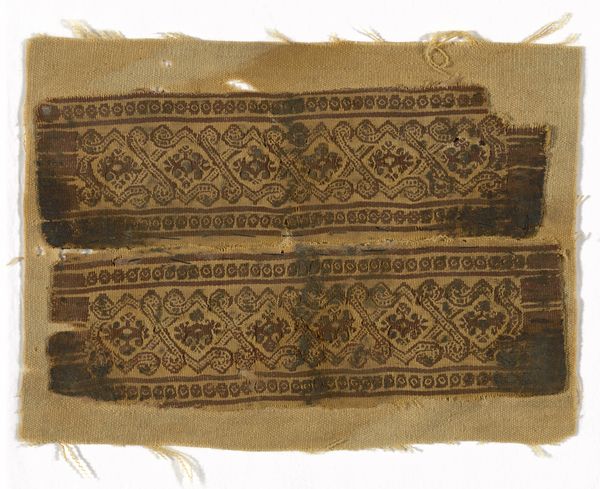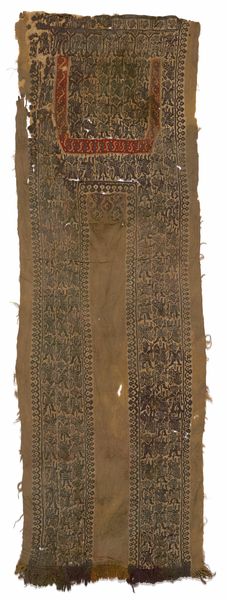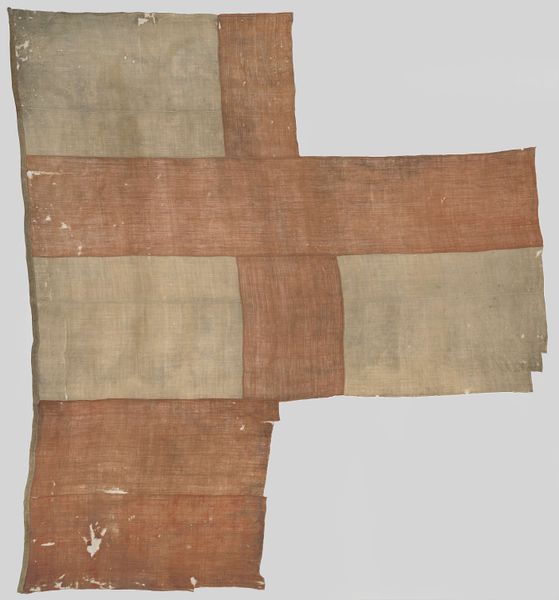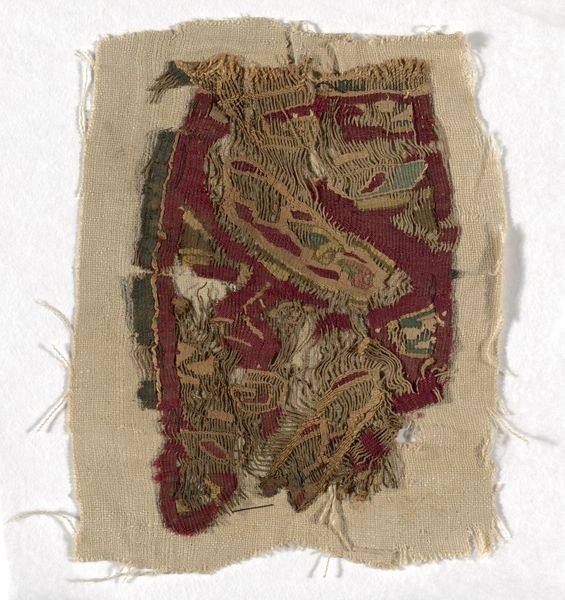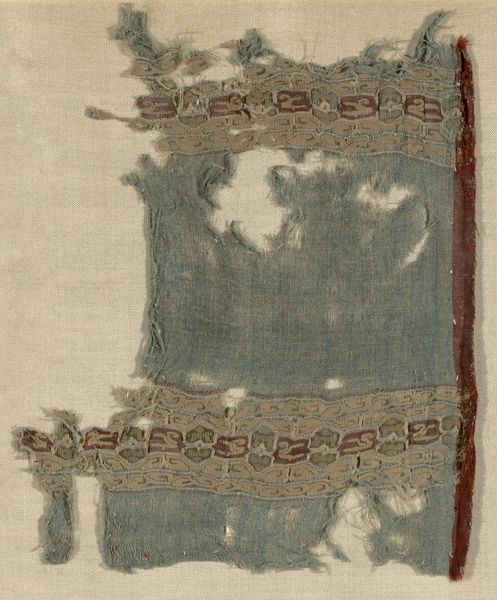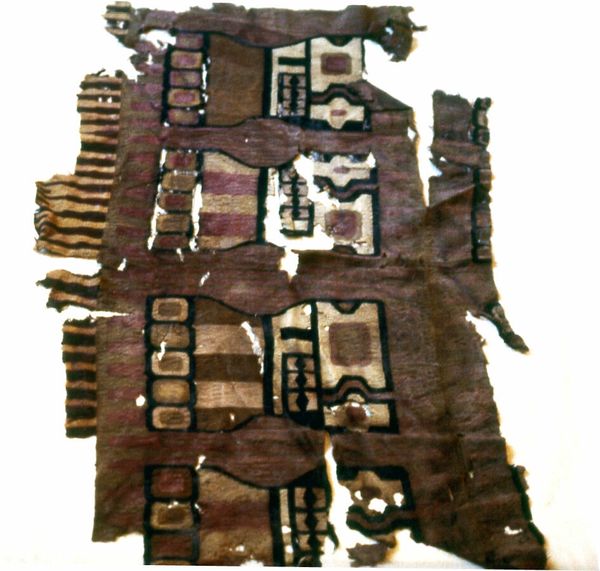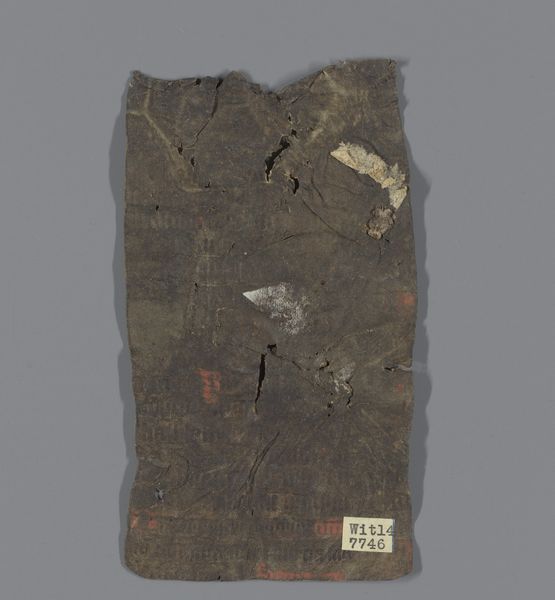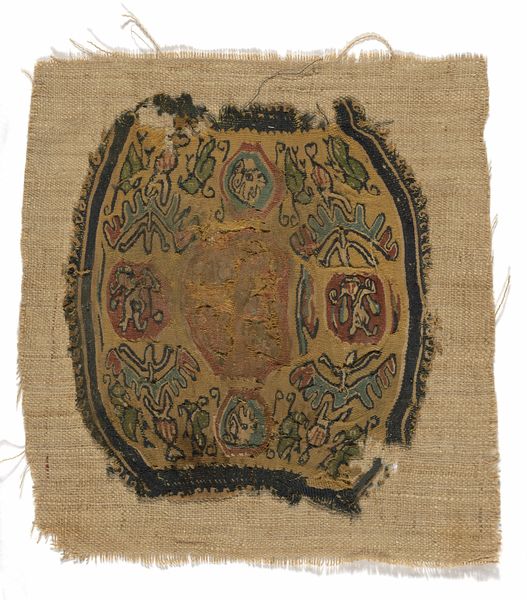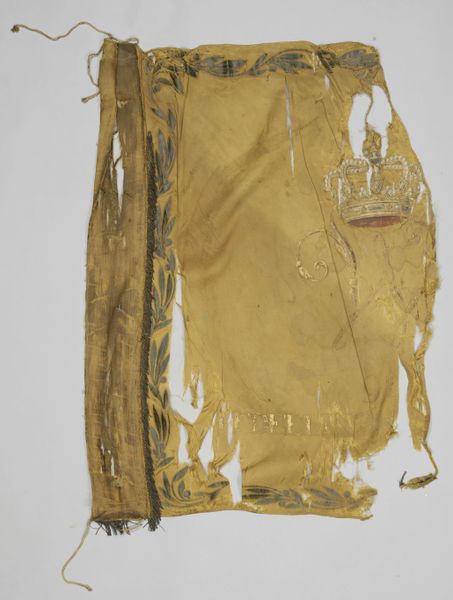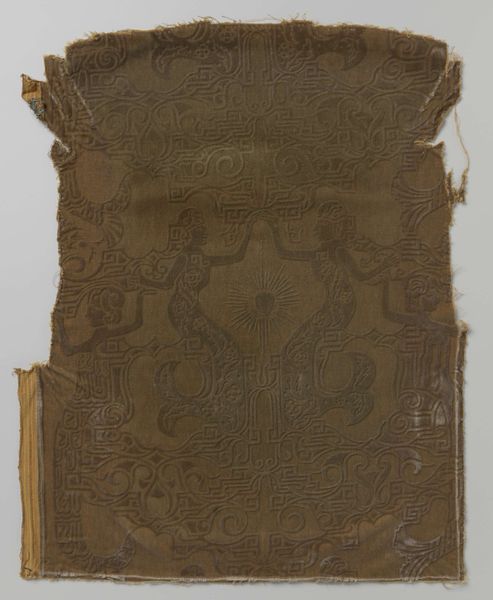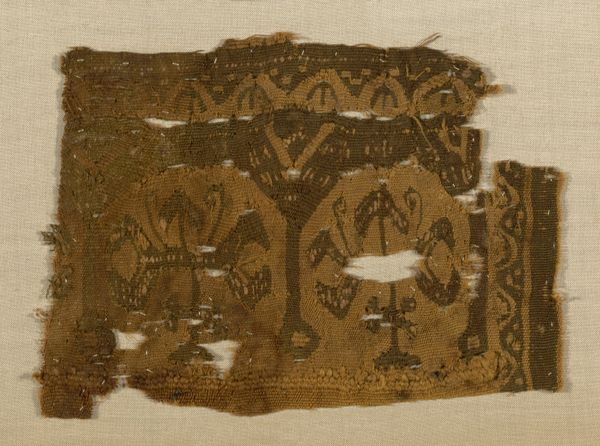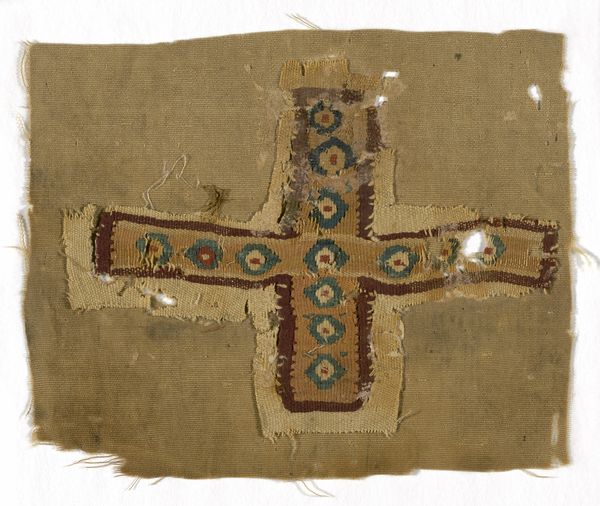
Child's Tunic Roman period (30 B.C.– 641 A.D.)/Arab period (641–969), 7th century
0:00
0:00
fibre-art, weaving, textile
#
fibre-art
#
narrative-art
#
weaving
#
textile
#
figuration
#
form
#
ancient-mediterranean
#
islamic-art
Dimensions: 50.8 × 45.7 cm (20 × 18 in.)
Copyright: Public Domain
Editor: We're looking at a Child's Tunic from the 7th century, during the Roman and Arab periods. It’s a textile piece – I think mostly woven – with these faded red figures all over it. It feels almost like looking at something ancient and precious… What can you tell me about the images here? Curator: This tunic is indeed precious; a tangible echo of the past. The motifs woven into it aren't mere decoration. The birds, for example, repeated across the fabric, appear frequently in Coptic textiles. In a deeply Christian society, could they signify souls or the Holy Spirit? Editor: I hadn’t considered that. So even a repeating pattern can hold a deeper meaning? Curator: Absolutely. Think of the ‘eye’ motifs woven in; are these a protective symbol meant to ward off ill-fortune? Each image can be considered as a kind of coded language, intended for both the wearer and those who beheld them. What stories do you think these figures were meant to tell? Editor: That's fascinating! It's hard to say exactly which stories, given the damage. Maybe it told of everyday life in a symbolic way? Or beliefs? Curator: Indeed, damage always obscures a complete understanding but still invites questions about belief, about community. How art, even in dress, connected people through symbols over generations. Now consider: even ripped and faded, does this tunic still convey something potent? Editor: Definitely. It makes me think about how even the simplest things can be filled with intention. Curator: Yes, and that objects from the past remain filled with silent meaning and cultural memory.
Comments
No comments
Be the first to comment and join the conversation on the ultimate creative platform.
